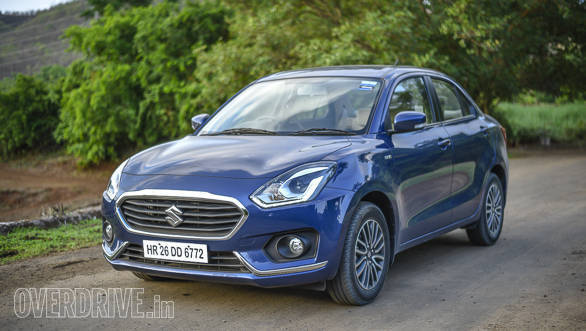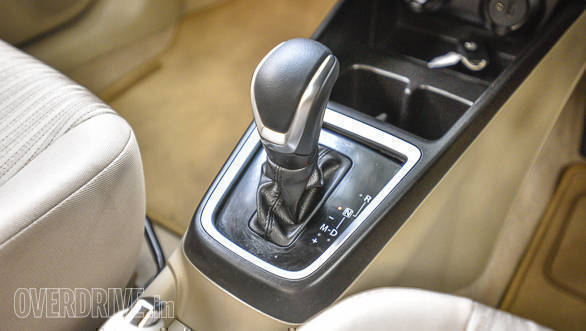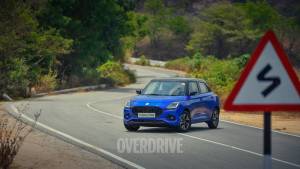Interview: Maruti Suzuki's CV Raman speaks about the all-new Dzire
We recently had a chat with CV Raman, executive director - engineering, Maruti Suzuki. Here's what he has to say about the new platform and what will make the all-new Dzire a game changer for Maruti.
Let's begin with exactly what undermines the car, the new platform. So can you tell us a little bit more about the new platform and how it has helped you expand your portfolio at Maruti Suzuki?
This is the fifth-generation platform on which the new Dzire is built, and the Baleno was the first model that was built on this platform and it has given a good performance in the field in terms of both fuel efficiency, and ride and handling. This fifth-generation platform is compliant with the future regulations. Secondly, it gives us an advantage in terms of light weighting. So, from the second-generation Dzire, what we have been able to achieve in even the third generation is about an 85kg reduction in weight in petrol and 95kg reduction in diesel. So that has helped us in terms of fuel efficiency. Thirdly, of course, the torsional rigidity of the fifth-generation platform is very good. So that gives us a better ride and handling on the vehicle and the overall performance is upped too. And one more thing is that the fifth-generation platform allows us to do pendulum mounting of the engine which has a benefit in terms of the overall NVH of the vehicle. All in all it gives better performance, it is light weight and I am sure you would have experienced that today.
Interesting of you to mention the pendulum mounting of the engine. Could you shed a little more light on what the pendulum mounting is and how different is it than what you have incorporated so far?
They traditionally have a three-point mounting on the vehicle. Here we have a right-left mount and then there is a pendulum torque rod in the middle. It helps you tip in and tip out of the vehicle. It goes along with and gives that moment. It also arrests that moment as required and reduces that tip in and tip out; therefore, it gives a benefit in terms of NVH.
Again, building further to what you just said, so the noise vibration and harshness levels of the Dzire have dropped to a commendable extent like a leap forward compared to the earlier one. What all measures were taken to make sure that the cabin is as quiet as it is?
The only two things we did. We did not do much on the NVH. We just made sure that we use the fifth-generation platform, and with that the pendulum mounting is giving this advantage of the NVH. Package as far as NVH is concerned, there is no specific difference from the earlier generation.
The other big thing that was alarming and something that we noticed in the Dzire was the new suspension set-up or the ride quality which has improved by leaps and bounds. Could you tell us what went into the Dzire suspension set-up? Were any components changed/carried over from the previous vehicle in terms of technology and how different this was?
Because this is a next-generation platform, the underpinnings are all very different from the earlier generations. But traditional technologies of shock absorber and struts have been used in the vehicle. Since it is the new generation, it has helped us get better ride comfort for the customers, both in the front seat as well as in the rear seat. And of course, the suspension has been tuned to the Indian conditions which we always do for all our vehicles, and we made sure that it follows the concept of the vehicle to give a smooth ride to the customers when they are driving on both city as well as on rural roads.
We noticed a new tyre being used by Maruti Suzuki for the first time, the Ecopia by Bridgestone. Do this tyre have any special advantages over the brands or the models that you have used previously?
I think these are a new set of tyres. It has definitely helped us in terms of both low rolling resistance as well as the NVH. It has definitely helped us in doing that and we had introduced it in one model before this, and this is the second model that we are using this Ecopia tyre. And it has given us benefits in terms of NVH and also rolling resistance which, of course, helps us in getting better fuel efficiency.
You have bought up the topic of fuel efficiency as well as mentioned that the new platform makes the vehicle lighter. You have continued using the same engines that we have seen so far on the entire Maruti Suzuki portfolio and that is something that always keeps coming up. Why is Maruti sticking to the same 1.2K series and the 1.3DDIs for all this while?
What are the customers looking for? They should get good power performance, be able to have good drivability on the city roads and get good fuel efficiency. With the weight reduction in the new-generation platform, from a part perspective, it has definitely changed. From a torque perspective, it has also helped. So you are getting that much more with less weight and the drivability has definitely improved; accelerations have improved overall giving a good fuel efficiency. We have tweaked the engines in terms of calibration to give that benefit of drivability and a good fuel efficiency. And so, it is top of the line as far as petrol is concerned; it is the best in class. In diesel, it is 28.4kmpl which is the most fuel-efficient car in India. So I think what do the customers need more? From a powertrain perspective, the customer's need is met.

Moving on to the gearboxes. Now you have the AMT as an option that is available in most of the trends that you are offering the Dzire in which it is a big positive. However, I remember a few years back when we spoke, it was mentioned that probably for the Swift Dzire, a more premium line, AMT may not make much sense, probably something like the CET like the Baleno employs would be the ideal choice but, now we see AMT becoming more mainstream at Maruti. I am sure you have improved in terms of technology. Could you just shed some light on where the AMT technology and how far has it come from the time you have launched it on the Celerio, and what is the way forward for AMT and how has the market responded to this particular technology?

As you said, we launched the AMT with the Celerio, and at that point of time, our key points that we were looking for were good fuel efficiency equivalent to the manual transmission. Making sure that it was from a cost and price point perspective. It was Rs 40,000-45,000 difference between a manual to an AMT auto pedal technology. And of course, less maintenance cost. So all of that was achieved through the Celerio and we have now got a penetration of 40 per cent of that. That has helped us understand the market better in terms of need which we have also, by introducing it in the Alto K10, WagonR and the Dzire diesel, learnt from that technology and also what the customer really is looking for. So we still strongly believe on this two pedal technology. We have now localised the technology in terms of manufacturing. So, more of it is happening in India. We have increased the production and the capacity of our suppliers. We have now seen that with the Ignis or with the Dzire. We have been able to meet the need of the customers from a two pedal technology perspective that in a metro, where stop-go traffic is there, how convenient it is. And so, with our lessons learnt in the previous model, we have incorporated it and made sure that the customers get an easy transition from second gear to third and third to fourth. And they do not really feel it. Yes, we can go a step higher up to the Dzire also. So that is something we believe. You must have experienced it and you might be able to tell about how your experience has been on the AMT and the pedal handlings.
Definitely, the readers will go through our reviews and we will have our opinions as well. One final question is off topic. You can choose not to answer it. One of India's well-known carmakers recently decided to announce that they are shutting shop as far as sales are concerned. Now, having worked with India's largest carmaker for all these years, what is your perspective on the Indian market? How does the Indian market exactly look like? What leads to car brands apart from Maruti Suzuki not really getting the right nerve of the Indian market? What is it that the Indian market really throws at the other carmakers that makes the game so tricky while Maruti in the last few years has got everything right?
I talk about Maruti Suzuki and I can definitely say that we have been very close to the customers. We are doing a lot of research and trying to understand how the customers are changing and we are changing with time. In the last two years, you will see our transformation in terms of the way we look at our products. We have the new design language on our products which is very different from what you used to see earlier. The technology that we are bringing in terms of SHVS or in terms of two pedal technology is changing. Comfort convenience like the smart link display audio, infotainment systems, connectivity of Android or Apple CarPlay. These are things that we believe are very important for the Indian customers, trying to understand that requirement and understanding what makes them tick and making it very specific. And the case in point is the Dzire. The Dzire is made only for India. I think that is the key. Trying to understand the customer's need and making a product that is relevant for the market. I think it is very important.
Starts Rs 6.09 Lakhs
1197cc
Automatic
77
113
24.12 Kmpl
Starts Rs 5.73 Lakhs
1120cc
Manual
72
190
25.4 Kmpl
Starts Rs 5.75 Lakhs
1199cc
Automatic
86
113
-NA-










